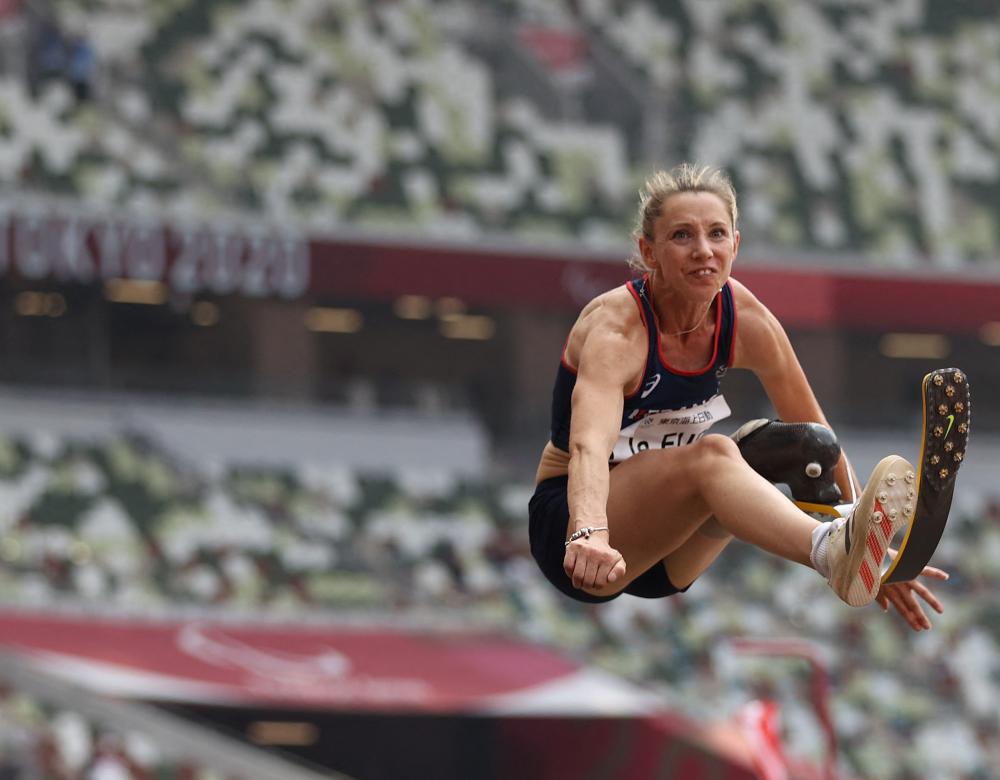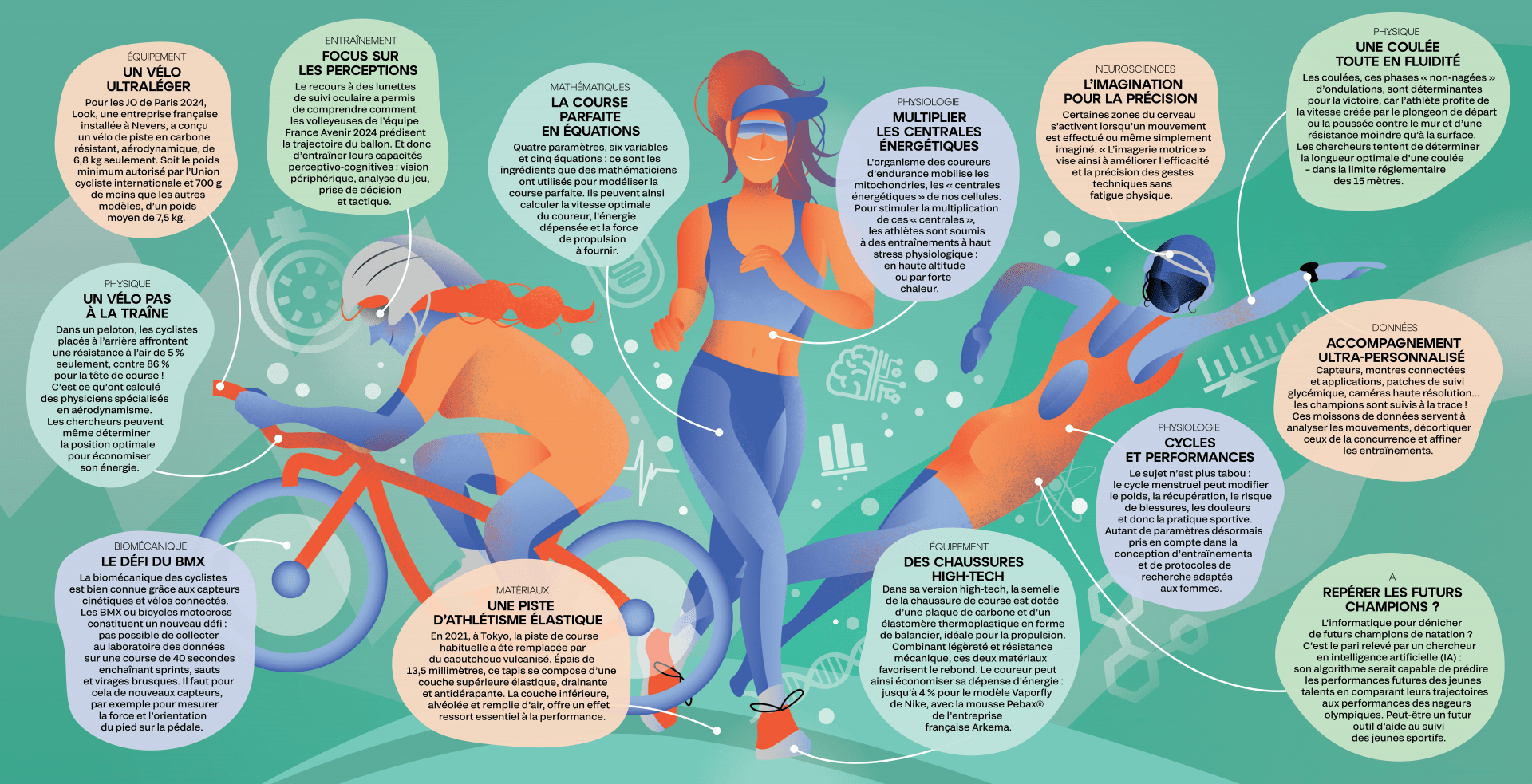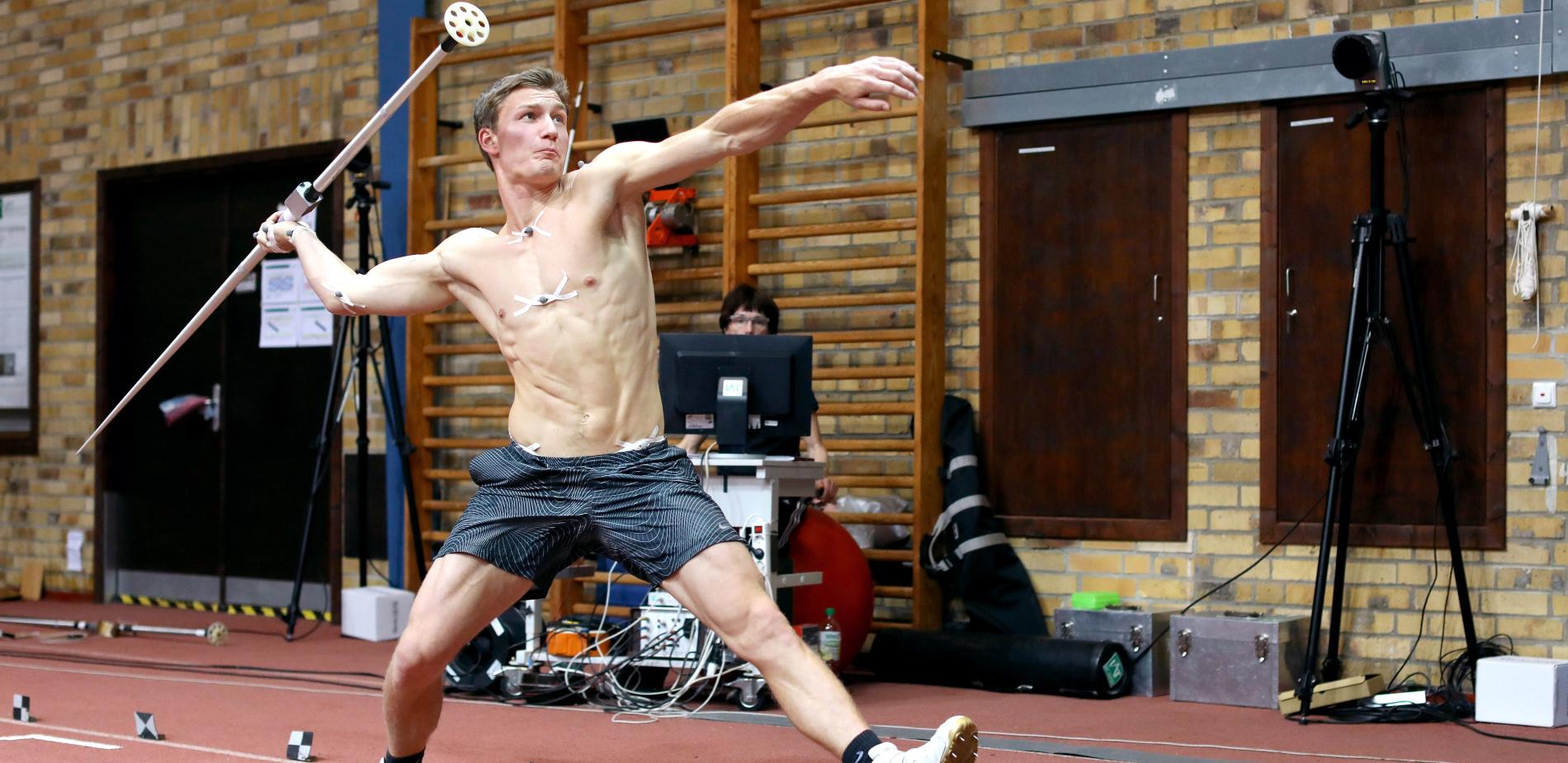
Science in service of medals
With the Olympics being held in Paris this summer, an unprecedented collaboration has been forged between dozens of research laboratories and sports federations. A first in France!
Report by Lise Barnéoud - Published on
Science and sport, a winning combination
Double the number of Olympic medals, which has not exceeded forty for the last six Olympic Games: this is the ambitious goal set by the French Ministry of Sport for Paris 2024. Admittedly, the French athletes will be competing on home soil, which is a significant advantage, thanks to public support: since 1976, every time a nation has hosted the Games, it has achieved its best ever ranking in the medals table. However, winning 80 of the 1,600 medals awarded in the 32 disciplines selected for these Olympics in Paris is a formidable challenge. To meet it, France is counting on its scientists in particular. A priority research programme (PPR) for “very high performance sport” was launched in 2018 by the French government. With a budget of 20 million euros, this programme, coordinated by the French National Centre for Scientific Research (CNRS), aims to meet the needs of athletes in all disciplines. Hundreds of researchers in physiology, neuroscience, materials engineering, physics and mathematics are teaming up with the various sports federations to individualise training, prevent injuries, perfect equipment, optimise sporting gestures, improve mental preparation, and so on. Now that a race can be won to the nearest hundredth of a second, every detail counts! The countries that invest the most in performance-orientated research have been in the Olympic top 6 since 2016, alongside Australia, the United Kingdom and Japan. In France, the level of investment since 2018 is unprecedented.
Infographics: Sport, when research comes into play
Collecting data using sensors, improving materials and equipment, physiological and biomechanical studies, new training methods … science and technology play a key role in improving performance.
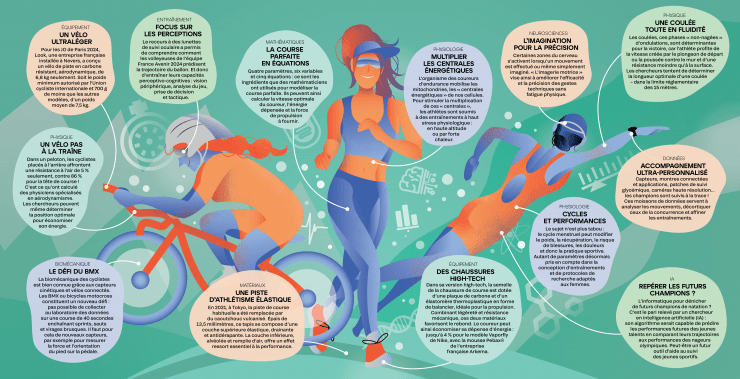
When physics meets friction
It’s a physical fact: as speed increases, friction from both air and water impedes the race. To optimise the cyclists’ position and the equipment used (bike, helmet, clothing, etc.), researchers are trying to model racing and friction using ultra-precise measurements in wind tunnels and in real conditions at the Saint-Quentin-en-Yvelines velodrome, which will host the Paris Games. The aim is to reduce friction forces as much as possible. Other researchers are studying the aerodynamic interactions between cyclists, in order to determine the best position to take full advantage of the suction effect. Similar studies are being carried out in swimming.
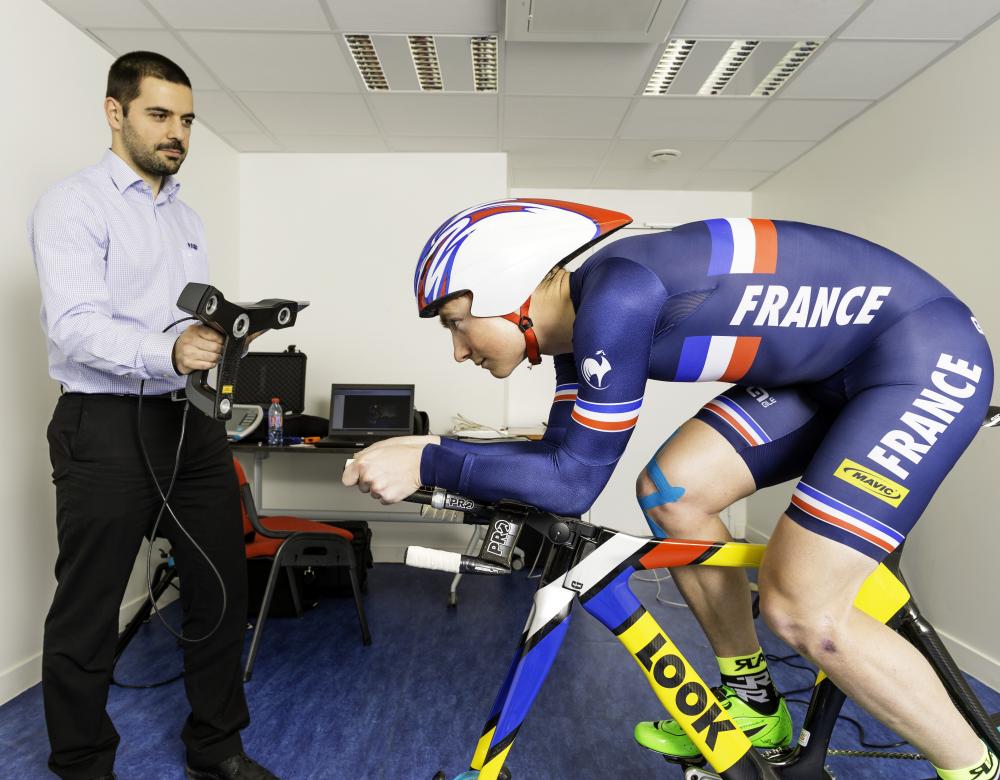


A winning microbiota under the microscope
American researcher Jonathan Scheiman has developed a probiotic treatment that has been endorsed by several Olympic medallists. In 2019, at Harvard Medical School, he discovered that the bacterium Veillonella atypica was more abundant in the faecal samples of marathon runners than in the general population. In addition, mice supplemented with this bacterium ran on average 13% longer. What about the results in humans? In 2023, Italian researchers reviewed studies on the impact of probiotics: despite encouraging results, it is difficult to draw conclusions given the small sample sizes and the diversity of the supplements used.
Can genetics help athletes?
Elite sportsmen and women are increasingly resorting to genetic testing to determine their predisposition to high performance; or, as in the UK and Australia, to measure the risk of injury to athletes and adapt their training accordingly. Some 200 genes are associated with sporting performance, particularly endurance (EPO and ACE genes) and speed (ACTN3 gene). Mutations, for example in genes coding for collagen, are also known to increase the risk of injury or inflammation after exercise. In short, having “good genes” helps you become a champion! In fact, several studies have shown that the probability of winning an Olympic medal increases significantly if a parent has already won a medal. In monozygotic twins, i.e. Those with identical genetic material, if one is a medallist, the other has an 85% chance of being one too! We’re a long way from carrying out systematic genetic tests, but this is a step that science doesn’t allow us to take anyway. “The heritability of performance is not just down to genetics”, says Juliana Antero, a researcher at the Institut National du Sport, de l’Expertise et de la Performance. It’s also about the environment, training, funding...”. In fact, genetic variations explain only a fraction of the inter-individual differences between athletes. Rather, thousands of genetic polymorphisms work together to improve performance. Yet for the moment, only a few of these are known and tested. In France, genetics is not included in the Olympic Games research programmes.
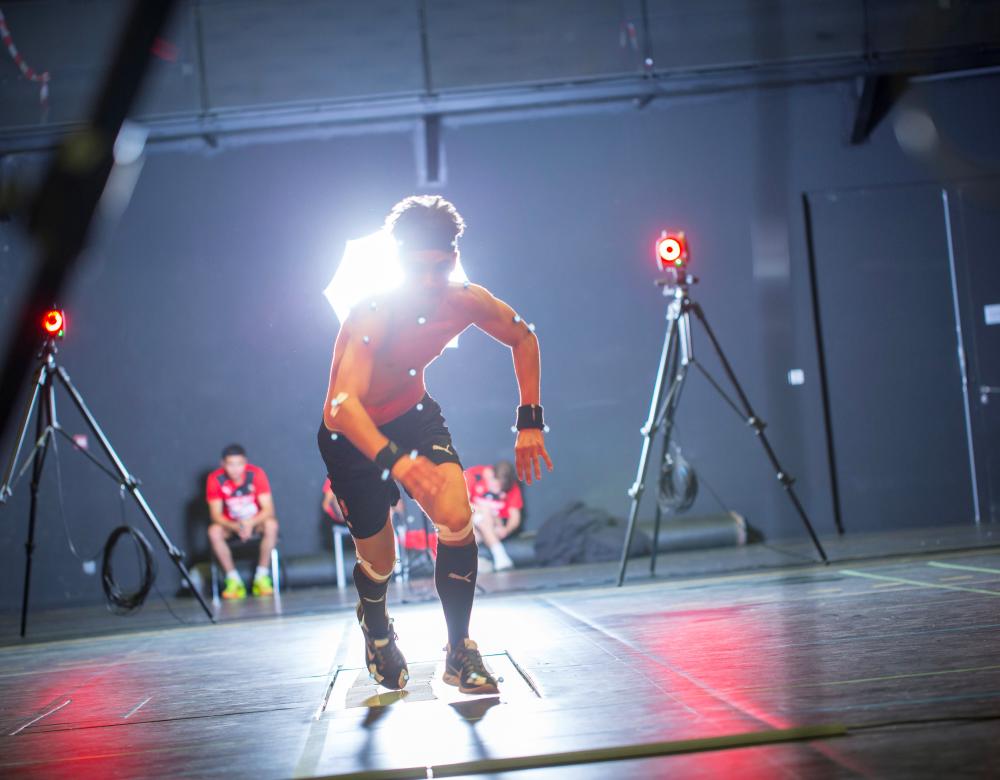
AI, a future sports coach?
By collecting then analyzing ever increasing numbers of datasets, artificial intelligence (AI) is fast becoming an invaluable ally for coaches. Bearing on training sessions, physiological tests, diet, stress and sleep patterns, this data paves the way to customized training sessions tailored around individual requirements. It can also be used to develop injury prediction models. In addition, AI can deliver detailed analyses of competitors' performances, highlighting their strengths and weaknesses. On a final note, such datasets can also be harnessed to detect talents or steer athletes towards sports in which they could better achieve their full potential.
The Grail of altitude for top endurance
The nations that regularly feature in the top 5 of the Olympics medals table (United States, United Kingdom, Australia, Japan, China and Russia) all get their athletes training at altitude or in hypoxia, i.e. with a reduced supply of oxygen to simulate altitude. In such an environment, the body produces more erythropoietin (EPO), a hormone that stimulates the production of red blood cells and therefore increases oxygen transport: a key factor in endurance events. Today, research is seeking to better understand the diversity of individual responses to hypoxia and the ideal timing of these training sessions before the big day.
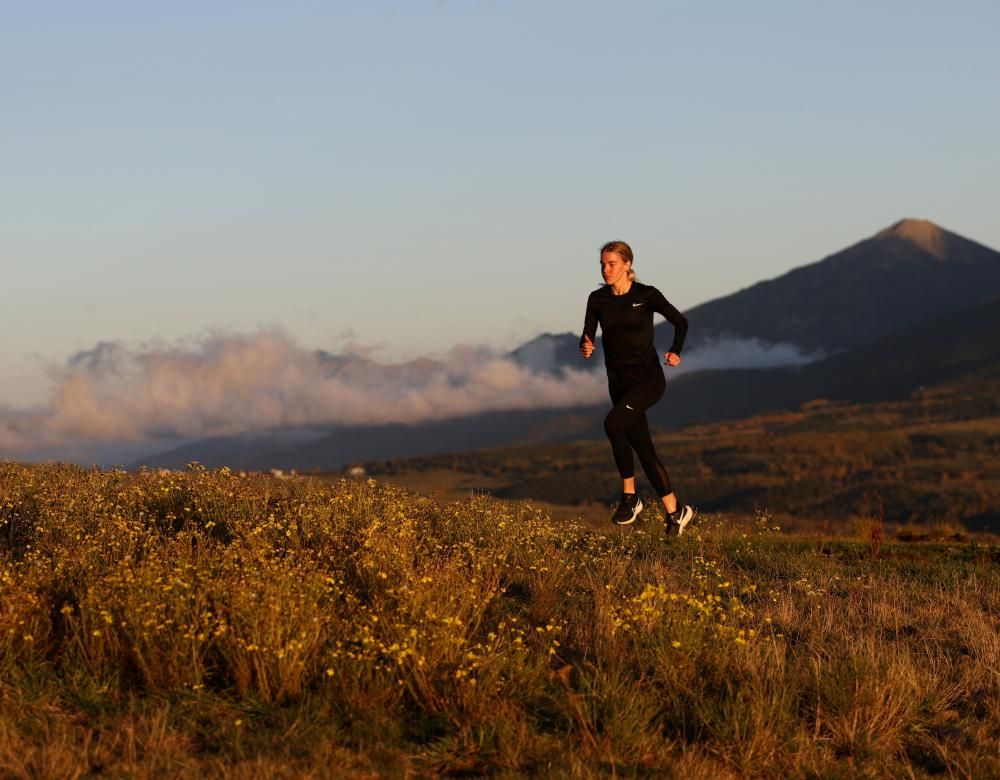
Sportswomen at the heart of research
The Paris Games are set to be the first to welcome as many female as male athletes. This parity conceals a de facto inequality: women are under-represented in sports science. Barely 9% of the studies published between 2017 and 2021 were devoted exclusively to women, compared with 71% for men. In other words, knowledge about physical performance and its applications in terms of training is primarily designed for men. To correct this imbalance, a number of research projects are now focusing on French sportswomen, who perform less well on the international stage than their male counterparts. In fact, France is the only nation in the Olympic top 8 where women systematically win fewer medals than men. Primary objective: to analyse the influence of hormonal variations on performance. ‘There is an optimal window of time, often when hormones rise after menstruation, when sportswomen can withstand more intense training loads. But this window is specific to each athlete’, explains Juliana Antero, head of the Empow’Her project at Insep. Other research, notably in the United States, has shown that in young female athletes, low weight is counter-productive in endurance events: the opposite of what is observed in men. Finally, certain injuries affect sportswomen more, such as cruciate ligament ruptures. This increased risk is linked to the female anatomy and hormones – which increase the laxity of the ligaments – and can be prevented by appropriate muscle strengthening.
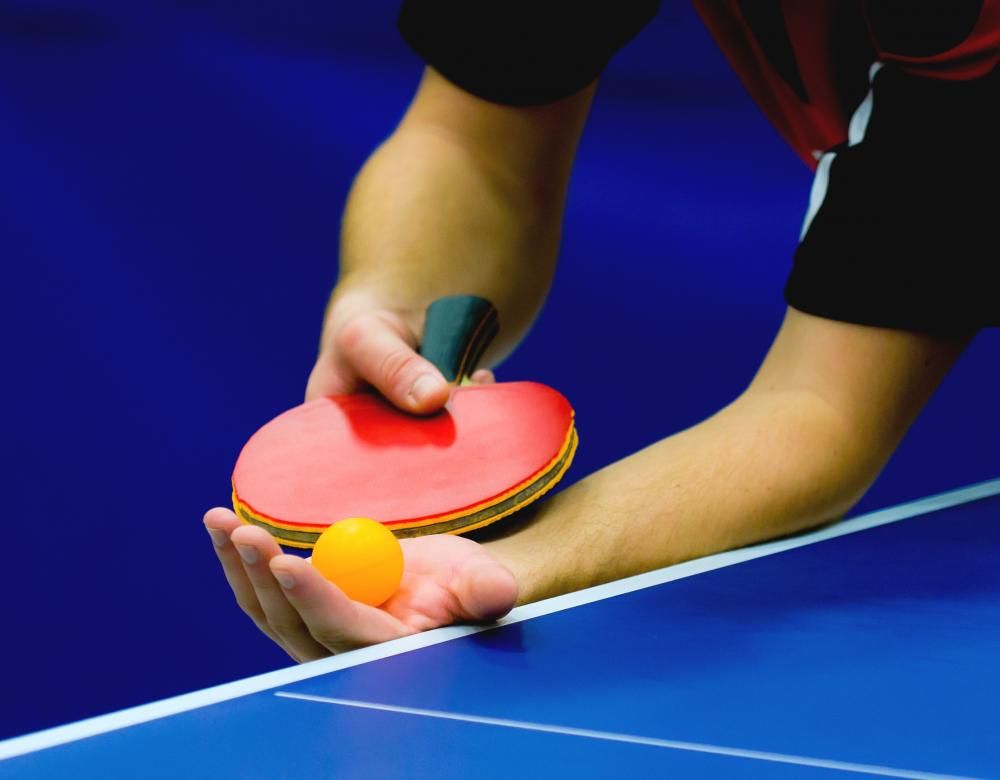
Engineering genius for a perfect bat
How can France improve its performances during table tennis competitions? A team of researchers from the École Normale Supérieure in Lyon is currently working on this question. The aim is to use ultra-fast cameras to characterise the interaction between balls and bats in terms of speed and spin (a ping-pong ball can spin up to 100 times per second). Ultimately, the aim is to offer French table tennis players the bat best suited to their style of play.
Competition at the cost of concussion?
Researchers are currently working with the rugby and boxing federations to prevent muscular and tendon injuries to athletes, as well as concussion. Using helmets fitted with sensors, a team from the École Polytechnique has been able to characterise the consequences of impacts. A hot topic: in 2022 and 2023, nearly 400 current and former rugby players filed lawsuits against several national federations, notably French, and international federations. They are suffering from neurological disorders linked to multiple concussions. As well as compensation, which is likely to be difficult to obtain, the players are calling for better prevention measures.
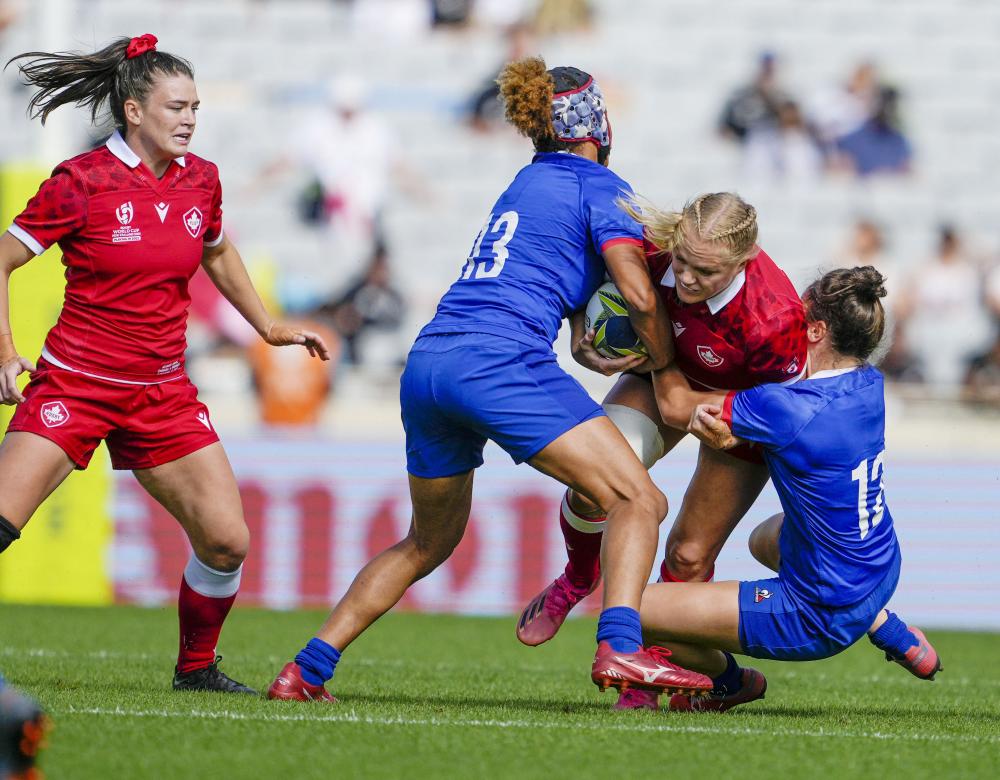
Performance, a never-ending quest?
Breaking records is getting harder and harder! French researchers at Irmes (Institute for Biomedical Research and Epidemiology in Sport) even estimate that, from 2027 onwards, half of all Olympic records will be within one thousandth of their value. According to them, we will have reached “the potential upper limits of Homo sapiens”. In fact, biological constraints prevent the perpetual improvement of certain parameters, such as maximum heart rate, muscle mass and contraction or reaction time. Other parameters, such as stride length, depend on the size of the athlete. Over the last thirty years, humanity has stopped growing. Climate change could be another limitation: in summer, temperatures are likely to be higher than optimum performance levels more and more often. Does this mean that we won’t see any more records being broken? Nothing could be less certain. Because there are factors other than physiology or climate that influence performance. Doping, for example, which is not always detectable despite regular and increasingly exhaustive tests. Then there’s the demographic factor: more and more people are trying their luck in sport, which increases the likelihood of finding that rare gem. Lastly, technological innovations: equipment is becoming lighter all the time, with better energy transfer and less friction. In short, for all these reasons, the next Olympic Games should see some new records set.
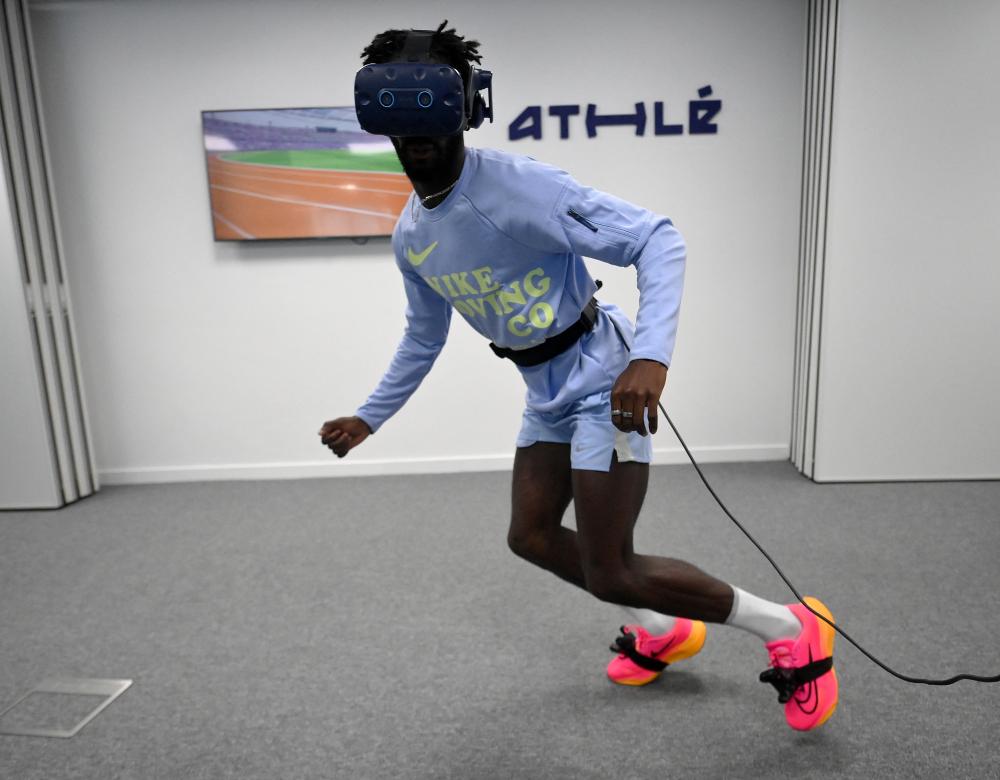
Virtual reality, witnessing the relay
Ryan Zeze hears the noise from the Stade de France. The 4 × 100 m has just started. The French athlete sees his team-mate approaching at full speed. He starts his run, reaching back to collect the baton. It looks like the real thing, but the scene is taking place in a virtual reality headset. Thanks to a partnership with several universities, the Fédération Française d’Athlétisme (French Athletics Federation) now has simulators that provide real-time feedback on performance. The aim is to work on the baton change in minute detail, without increasing fatigue. In the simulators developed for boxers, an avatar takes the punches of a virtual opponent.
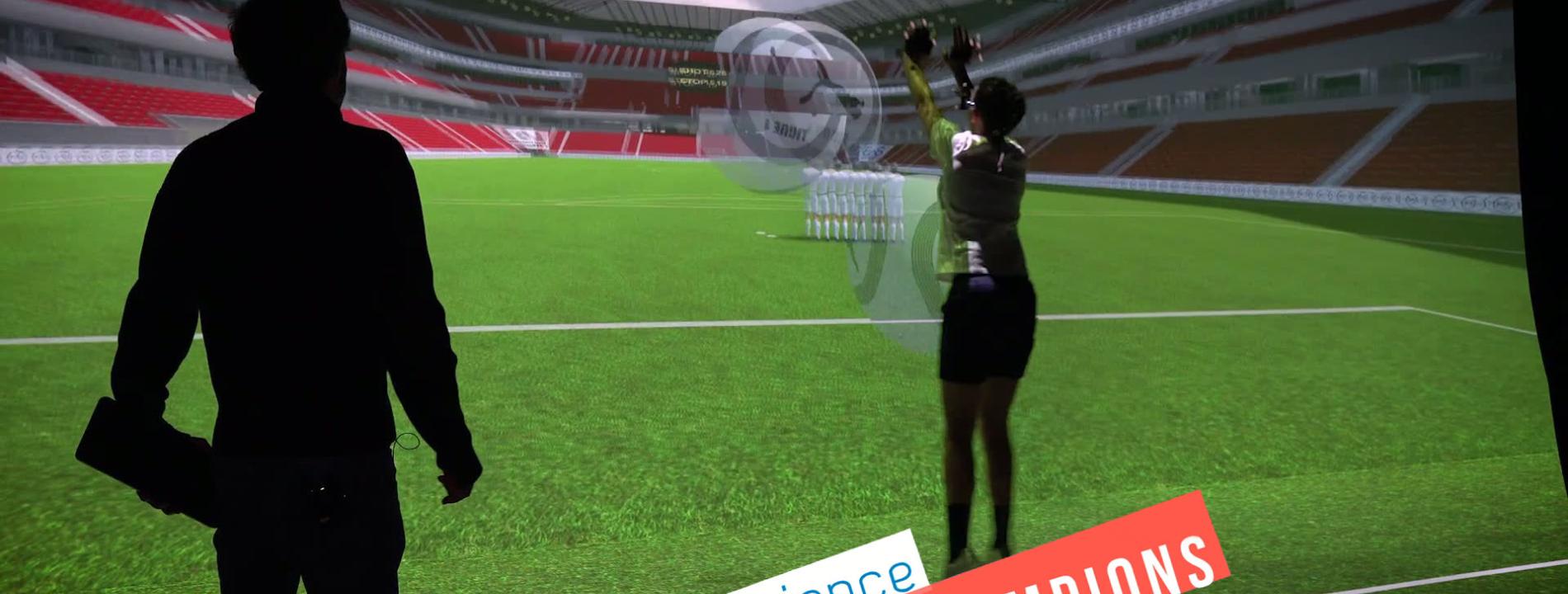
High-tech prosthetics for para-athletes
For the Paralympics, research is focusing in particular on equipment and prosthetics: wheelchairs, tyres, lower-limb prosthetics and so on. For the long jump, for example, the challenge is to convert the athlete’s kinetic energy into momentum without causing injury. This transfer of energy depends on the shape of the prosthesis, the materials used, the friction in the socket and the type of sole fixed under the prosthesis. A laboratory test machine has been developed to compare the characteristics of the different prosthetics and enable athletes to select the best performing ones.
